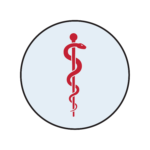Choose Application

Medical

Wellness

Legal

Military / National Security

Work & Employment

Education

Sports & Competitions

Entertainment

Marketing
Medical Preamble
Over the last twenty years, remarkable technological advances have been made in science and medicine. However, while medical therapies for management of non-brain related disorders and trauma have advanced, treatments for brain diseases, brain injury, and other medical conditions related to the nervous system have proved less successful. One reason for this is that pharmaceuticals and immunotherapies are hindered by limited access through the blood brain barrier. In addition, unlike the rest of the human body (with the exception of the heart), the nervous system is regulated not just by neurotransmitters and signaling molecules (which can be targeted by pharmaceuticals agents) but also by electrical and biomechanical signals. Thus, in brain diseases for example, there is increasing evidence that electrical and biomechanical processes as well as neurotransmitters and their related cell signaling systems are disrupted.
Using technologies that speak the language of the brain (i.e., electrical, biochemical, and biomechanical) might help to overcome previous challenges encountered and enable discovery of disease biomarkers or treatment surrogates, providing the ability to either mimic or teach the brain to communicate effectively again. Neurotechnologies in the medical field currently are being used to diagnose and monitor the brain and nervous system, as well as to advance our knowledge regarding how disorders, syndromes, and injuries of the nervous system are caused by abnormalities in electrical, biochemical, and biomechanical signaling, as well as aberrant neurotransmitter systems.
Medical neurotechnologies are regulated, subject to approval and oversight, by appropriate administrative bodies and mechanisms in different countries. While medical neurotechnologies can also be used outside traditional clinical instances where there is no clear therapeutic benefit, this document will focus on paradigmatic cases of medical use, leaving the “off label” and/or “gray” areas to be considered as part of the wellness document1.
Similarly, we will not cover neurotechnologies that enhance human capabilities beyond the normative state (e.g., neurotechnologies aimed to augment capabilities beyond those typical of humans), as these applications fall outside the scope of the goals of medicine and will be discussed instead as part of other applications.
In this document, we will highlight a wide range of existing and anticipated medical neurotechnologies, including those designed for clinical use as well as direct-to-consumer medical neurotechnologies that diagnose, monitor, prevent, or treat disease in humans, and discuss the ethical, legal, social, and cultural implications (ELSCI) of these technologies when used for medical applications.
1 A helpful delineation here is the US Food and Drug Administration’s definition of a “medical device.” Under Section 201(h)(1) of the Food, Drug, and Cosmetic Act, a medical device is “an instrument, apparatus, implement, machine, contrivance, implant, in vitro reagent, or other similar or related article, including a component part, or accessory which is: (A) recognized in the official National Formulary, or the United States Pharmacopoeia, or any supplement to them, (B) intended for use in the diagnosis of disease or other conditions, or in the cure, mitigation, treatment, or prevention of disease, in man or other animals, or (C) intended to affect the structure or any function of the body of man or other animals, and which does not achieve its primary intended purposes through chemical action within or on the body of man or other animals and which does not achieve its primary intended purposes through chemical action within or on the body of man or other animals and which is not dependent upon being metabolized for the achievement of its primary intended purposes. The term “device” does not include software functions excluded pursuant to section 520(o).”


